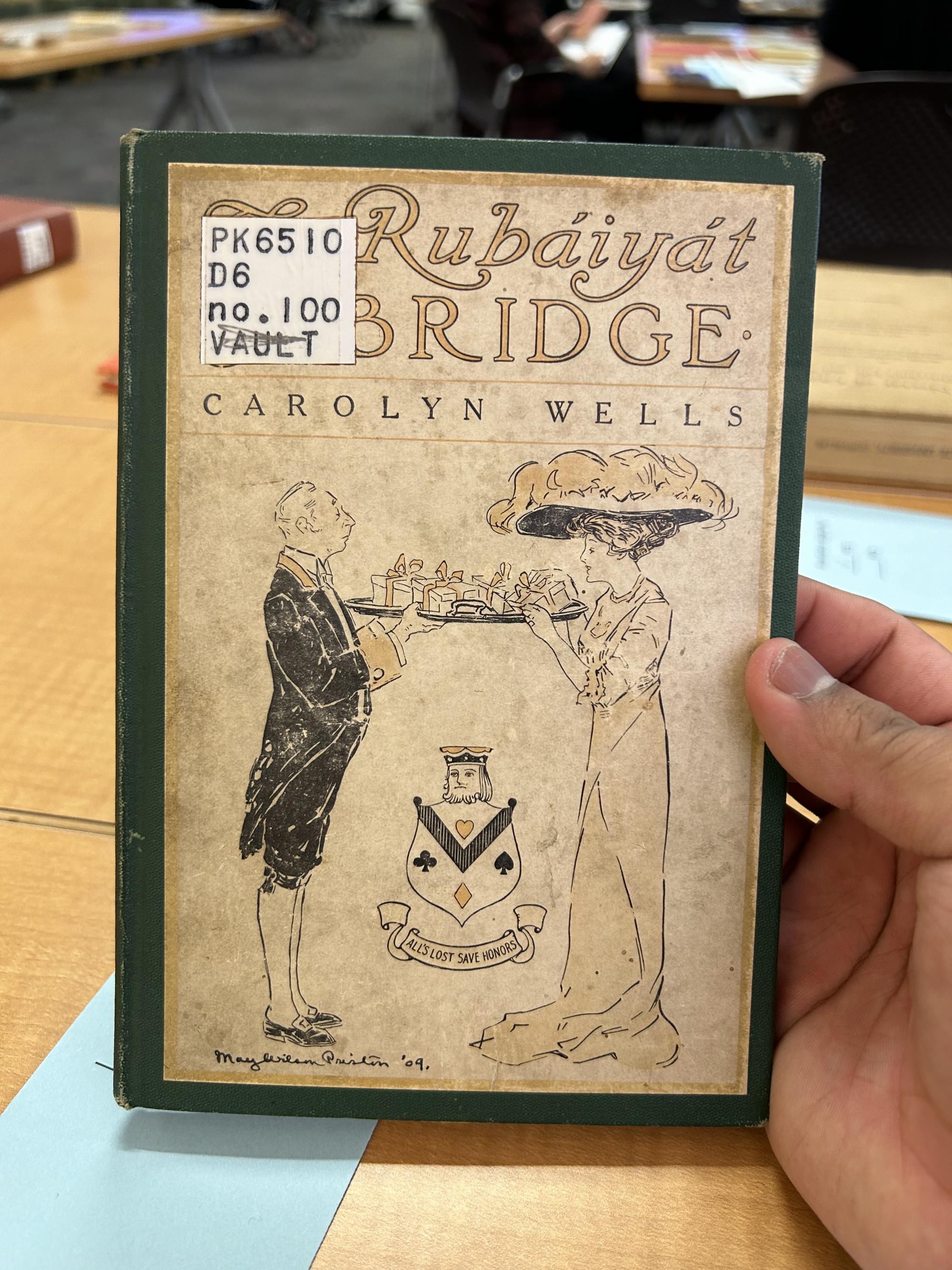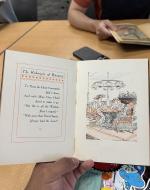Created by Andres Santos on Mon, 04/17/2023 - 15:50
Description:
For my selected edition, I selected The Rubáiyát of Bridge by Carolyn Wells. The illustrations are drawn by May Wilson Preston. This particular Rubáiyát was published in April 1909 by Harper and Brothers Publishing Company, and the reason that this Rubáiyát is interesting is because it is entirely based off of the card game, bridge.
Of course, I had no idea that bridge was even a card game, much less a popular one back in the early 1900s. According to its Wikipedia page, I learned that the game has been around for quite some time, and it’s a game of skill and strategy. To break it down in it's simplest terms, a game of Bridge consists of four people playing in teams of two, called "pairs". A standard deck of cards is dealt to the players, and each player must have 13 cards in their hand. There are two main phases of the game: bidding and card playing. Players can bid for the minumum number of tricks (a set of four cards played by each player in turn during the play of a hand) that they think they can win. Once the bidding is complete, that's when the play actually starts. The players go around placing cards, and the player with the highest-ranked card wins the trick (Wikipedia).
Bridge was a cultural phenomenon back in the early 1900s, and with rubáiyáts being something that was already well known and established by the early 1900s, this would be considered a major crossover back in the day. And one could even argue that The Rubáiyát of Bridge would be seen as a huge literary success because at the time, everyone knew what Bridge was, and people would've been curious on what combining the two different elements would look like.
One thing to note is that the book, which is small and green, is formatted uniquely. The Rubáiyát of Bridge is formatted to show a drawing on one page, and then a poem on the next page after that. And typically, the poem and the drawing go hand in hand with one another. Another thing to note is that since this rubaiyat is about a card game, each poem and drawing is about the game of bridge.
One example of this is on one of the pages (Figure 2), the poem reads, "The Card no Question makes of ayes and noes, but High or Low, as suits the Player shows; But he who Stands Beside you, Looking On, He knows about it all! He Knows!! He Knows!!" and the picture to the rght of the poem is of of a women holding a hand of cards, while a man, presuambly her husband, is looking over her shoulder. The two are smiling eith each other. This is an example of how the poems and the drawings go hand in hand.
There are a ton of references said in the game that avid players of bridge would understand, and in each drawing, there is a deck of cards, whether they be hidden or in plain sight. The illustrations are drawn with black and pink colors, making them stand out even more for the reader. And they are very detailed, going as detailed as seeing each individual card in the hand, or the expressions on the charatcter’s faces.
In terms of use, you could tell that this book had been read before. There was some wear and tear to it, but it wasn’t a lot to make you want to not read it. There were some fingerprints on the pages themselves, which shows that this rubaiyat was read over and over again. And the pages are stained sort of like a tea color, like yellowish.
Works Cited: “Bridge.” Wikipedia, Wikimedia Foundation, 15 Apr. 2023, https://en.wikipedia.org/wiki/Bridge.




